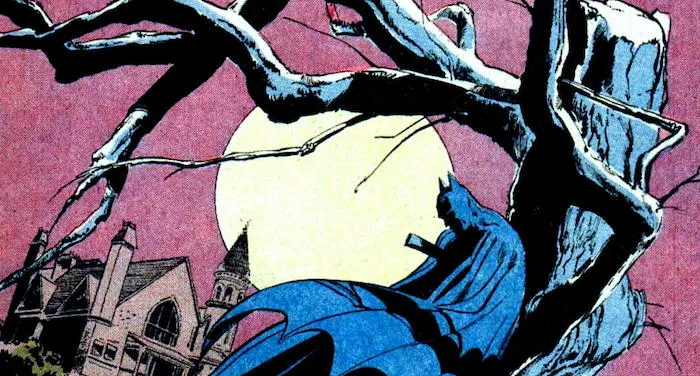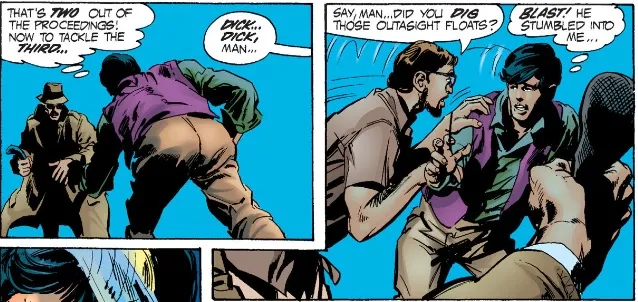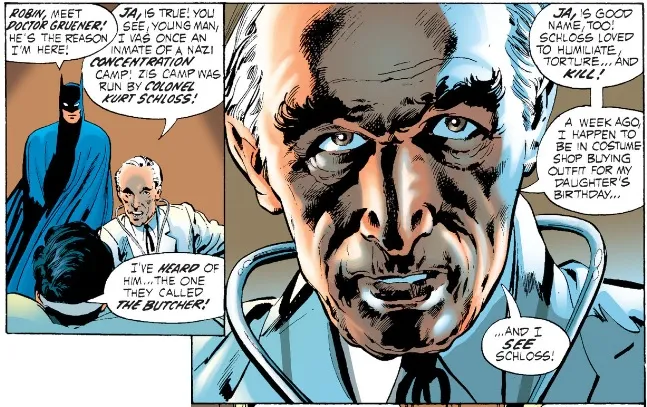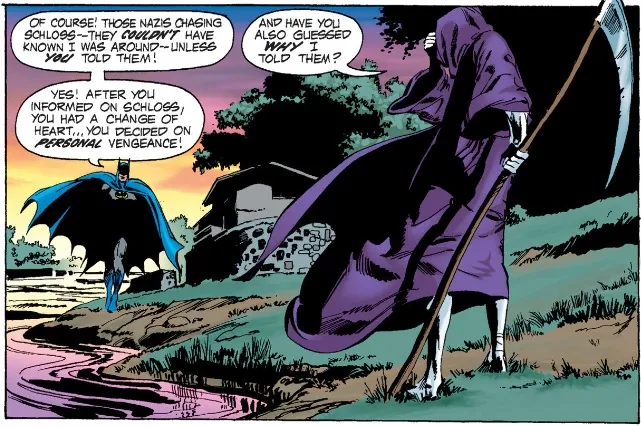
On This Day (Oct 31): Batman Fights Nazis in Vermont
Admittedly, Batman is no stranger to Nazi fighting. But this occasion is special for several reasons.
For starters, Batman #237 was not published during World War II. It was released in 1971 when the second event of note was occurring: creators at both Marvel and DC got together to create a years-long pseudo-crossover event on the sly, all centered around the real-life annual Halloween parade in Rutland, Vermont, then run by a comic book nerd by the name of Tom Fagan. Around Halloween, heroes from one company would end up in Rutland for some contrived reason or another and meet characters who kinda-sorta resembled those from the other company.
The comics creators themselves would also show up because why not? For instance, Thor and Loki paid a visit in 1972 and rubbed elbows with the title’s writer and colorist, among others.
The main story from Batman #237, “Night of the Reaper!” continues this tradition with people dressed as Captain America, Thor, Sue Storm, Havok, and Spider-Man, “Webslinger Lad.” We also get unnamed cameos from real-life writers Bernie Wrightson, Gerry Conway, and Alan Weiss, here recast as Dick Grayson’s college chums just here to see the parade. And, in Alan’s case, to recover from three days of doing drugs chugging coffee to get through an art exam.

I apologize for the coloring in these scans. These are taken from a digital edition where the coloring was clearly redone using modern methods, and it’s pretty off-putting. If you want to see the whole story with the original coloring and some great behind-the-scenes info on how the story came to be, go here.
As you can see, things quickly take a turn for the serious as some kid pretending to be Robin gets beat up by some very real thugs. Dick changes into Robin to investigate and finds a dead man in a cheap Batman costume. He also meets the presumed killer: the Grim Reaper himself, wielding a scythe that knocks Robin into a nearby stream.
Fortunately for the Boy Wonder (or Teen Wonder, as he was by this point), the real Batman shows up to get him medical help from Doctor Gruener. Gruener, a Holocaust survivor, explains that he recently saw a particularly odious old Nazi wandering around town.

“The Butcher” seems to have been a popular nickname among fictional Nazis: not only is Schloss known by that name, it was later used in a questionable Captain America comic.
This guy, Schloss, is super into costume parties, so Batman stakes out Tom Fagan’s Halloween party. He does find him, but not before Schloss’s disgruntled ex-colleagues plant a bomb in his car in retaliation for spending a bunch of Nazi loot on himself. Batman tries to save him, but he isn’t too sorry to see a Nazi get what he had coming.
What does upset Batman — to the point of calling Robin “stupid” as he tries to console him, which — rude — is knowing that none of the Nazis had a reason to beat up the fake Robin or murder the fake Batman. So, who did?

Yep, it was Doctor Gruener pulling everyone’s strings the whole time in a wholly understandable but wildly unethical attempt to get revenge for the family he lost because of the Butcher decades ago. Batman is sympathetic and even contemplates letting him go, but then the “cool motive still murder” GIF plays in his head, and he rejects that idea.
While trying to escape Batman, Gruener runs into Alan, now sober enough to realize that being chased by a guy dressed as the Grim Reaper is not normal. While Alan begs for mercy, Gruener notices the Star of David necklace he’d kept wrapped around the scythe for some reason. (Presumably, as a symbol of why he was doing all this.) In an emotional final page, Gruener suddenly realizes the full horror of what he has done and falls to his death.

So, yeah. Not exactly your traditional Halloween narrative.
I wonder, if DC were to tell or retell this story today, would there be any differences in the dynamics between Batman and Gruener? In 2020, DC officially acknowledged that Bruce Wayne is Jewish after accidentally making him that way with the introduction of his Jewish maternal cousin, Kate Kane.
Had this comic’s creators somehow been privy to this information, would it have made a difference in how they executed it, especially in terms of Batman’s reaction to Gruener’s crimes? Would there have been an extra moment of hesitation before deciding to take him in? Would he have tried to sympathize on the basis of their shared heritage? Does Bruce know of any of his own relatives who died in the Holocaust?
In any case, this story is notable for being by far the most serious — and probably the best remembered, and almost certainly the best — of the Rutland stories. While most of the other issues were content to just be silly and wallow in the goofier aspects of Halloween, “Night of the Reaper!” adds a real plot with an appropriately menacing and eerie atmosphere. It’s also a really sad story: the Nazis ruined Gruener’s life, and Gruener allowed his pain and bitterness to ruin (and end) the life of another.
And hey, Halloween is the perfect time to examine the thin line between monster and man.














